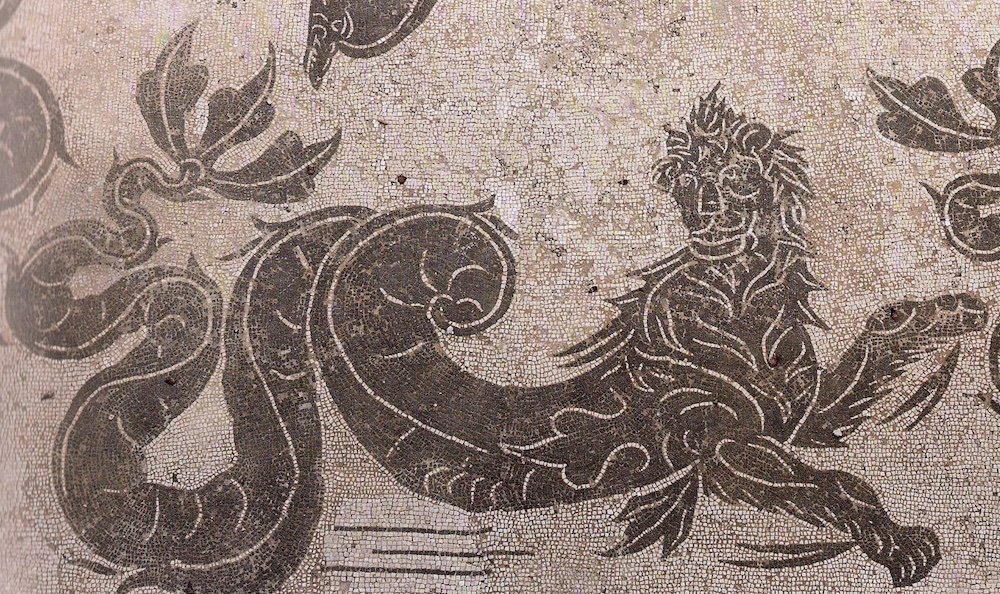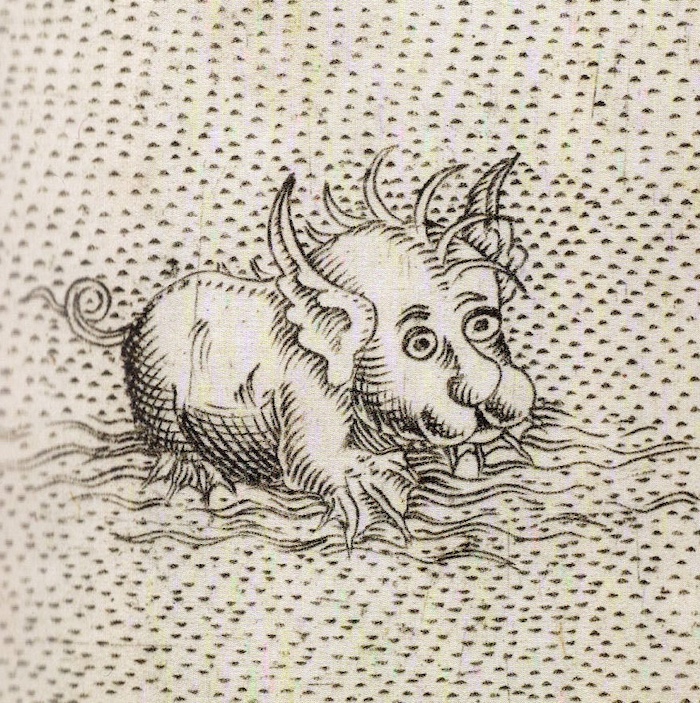Despite all the media attention Seraph Moore has had over the past four months, he is now barely recognisable from his headshot sent to me by his media team. The give away as I take my seat opposite the diner table from him is his telltale yellow cravat, which sits, tossed aside, next to his full English breakfast.
“Sunlight is an issue, down at camp,” he says, which explains the pale complexion his skin has taken on. Even his eyes seem ringed with emerald when the morning light catches behind his glasses. “The plan is that by the time I get back, there will be some solution to that.” He waves his hand to dismiss the thought. I get the feeling he has bigger fish to fry.
When I ask if he’s willing to go on the record with the “down at camp” remark he bites his lip, as I imagine he’s running through a mental checklist that his legal team have given him. “It was just an expression,” he decides. “Down” alone would be the scoop of the year.
The location of the Mirth Gate is still only known to a few handful of people on Earth – and a couple who at any given time may not actually be on a Earth at all, if the theories around the Gate are to be believed.
I have 10 minutes with Seraph which was begged for via a friend of a friend, and was only agreed to on the condition that I could bring him coffee beans from a Nottingham roastery that was local to me, but not anywhere near the Brighton seaside that Seraph would be conducting his UK business from in the eight hours he’s here. The greasy spoon, which was supposedly a pitstop before moving onto the makeshift hotel room-and-office, is already a live with others waiting their turn to speak with the Head Scientist.
“It wouldn’t help you to know,” Seraph said when I asked him if he could at least narrow down the continent the Mirth Gate was discovered. When I press for more, whether he means that cryptically, whether it wouldn’t help because there’s some “non-universal” physics at work, or if he simply meant the world wouldn’t be better off by knowing, he takes a bite from his toast and leaves the time-wasting silence lingering.
Seraph has been in charge of the Mirth Gate Research Project since the original research lead, Rodger Mirth, went missing in circumstances that the Project has been tight lipped on. Mirth’s first paper, published in International Journal of Thermal Sciences six months ago, revealed that he and his team of cave divers and deep-hole specialists had uncovered an unnatural rock formation which gave off an unusual heat signature that was not radioactive in nature. Attached to the paper was the only publicly released photograph of the Gate. (The torch lit, underexposed photo remains the only released photo.) It was only after efforts from people whose interests extend past thermal dynamics looked at the photograph that more was discovered about it: glyphs like Celtic runic inscriptions were chiselled into the rock.
The free standing, stone archway captured the attention of the mainstream media in a frenzy that hasn’t let up in the months following, despite any further news coming from the research team. Clinging to Mirth’s paper, drawing out every line of it until all interpretations possible have been made about it, it’s now difficult for any one to keep track of what makes sense. With no guidance from those with first hand experience of the Project, an entire scientific field of non-universal physics has sprung to life, branching away from the mind bending theoretical sciences into the down right strange.
“We are juggling many plates. Some days progress is slow, some days there are a string of breakthroughs one after another. The world will have to be patient. The science put forward by these… novices is not dangerous, per se. They are writing science fiction though. We will give a full report when we understand what it is we have.”
Are you able to tell us who is funding the project? “No.” Are you able to tell us which journal you will be publishing your findings in? Which subject area, even. “No.” Can you say how many people are working on the project? “No.” Are there military implications to the findings? “I cannot say.”
It’s clear now why, in the few days away from the secret location of the Mirth Gate, there have been so few interviews with the press. There’s very little, maybe nothing, that can be revealed yet.
Instead of running at the same wall again in my last few moments, I simply ask how he’s doing.
“The project is going at a sustainable pace. We should have more soon.”
No, sorry, how are you doing? Seraph Moore looks at me and I think for a moment I’ve offended him. But in fact he’s looking right past me. I see for a moment a fluttering of breath and wonder if there’s any you in there.
A woman who seems to have had much more sleep than Seraph touches him on the shoulder, says they must be going, and the diner is empty in a few seconds. The scientist’s full English is complete save for a single bite of unbuttered toast.
I’m working on a video game! It’s been a while and progress is going quite well. It’s been three weeks or so now, and I’m covering the journey (when I have something to show off) over on d20.social.
It’s a dungeon crawl game, inspires by Nethack and Stargate and Neopets (I’m not entirely kidding on that last one).
I know what you’re thinking: does it have the Three Principles? It does not. It might have one! But not yet.




